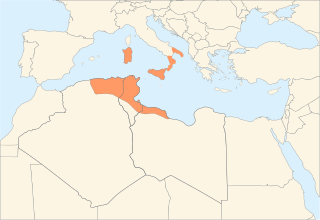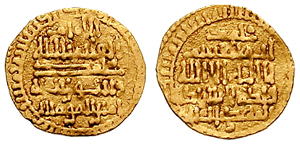
The 8th century is the period from 701 (DCCI) through 800 (DCCC) in accordance with the Julian Calendar. The coast of North Africa and the Iberian Peninsula quickly came under Islamic Arab domination. The westward expansion of the Umayyad Empire was famously halted at the siege of Constantinople by the Byzantine Empire and the Battle of Tours by the Franks. The tide of Arab conquest came to an end in the middle of the 8th century.
The 810s decade ran from January 1, 810, to December 31, 819.
The 820s decade ran from January 1, 820, to December 31, 829.
The 830s decade ran from January 1, 830, to December 31, 839.
The 860s decade ran from January 1, 860, to December 31, 869.
The 870s decade ran from January 1, 870, to December 31, 879.
The 880s decade ran from January 1, 880, to December 31, 889.
The 780s decade ran from January 1, 780, to December 31, 789.
The 760s decade ran from January 1, 760, to December 31, 769.
The 900s decade ran from January 1, 900, to December 31, 909.
The 910s decade ran from January 1, 910, to December 31, 919.
The 920s decade ran from January 1, 920, to December 31, 929.

Year 900 (CM) was a leap year starting on Tuesday of the Julian calendar.

Year 902 (CMII) was a common year starting on Friday of the Julian calendar.

Abū al-ʿAbbās ʿAbd Allāh ibn Muḥammad al-Saffāḥ usually known as as-Saffāḥ, was the first caliph of the Abbasid Caliphate, one of the longest and most important caliphates in Islamic history.

The Aghlabids were an Arab dynasty of emirs from the Najdi tribe of Banu Tamim, who ruled Ifriqiya and parts of Southern Italy, Sicily, and possibly Sardinia, nominally on behalf of the Abbasid Caliph, for about a century, until they were overthrown by the new power of the Fatimids.

Abū al-Qāsim Muḥammad ibn ʿAbd Allāh, better known by his regnal name al-Qāʾim (القائم) or al-Qāʾim bi-Amr Allāh was the second Caliph of the Fatimid dynasty, ruling in Ifriqiya from 934 to 946. He was the 12th Isma'ili Imam, succeeding his father Abd Allah al-Mahdi Billah.
Abu Ishaq Ibrahim II ibn Ahmad was the Emir of Ifriqiya. He ruled from 875 until his abdication in 902. After the demise of his brother, Ibrahim was endorsed as emir where he took steps to improve safety in his domain and secured the development of commercial activities. He improved public works, such as building a vast reservoir, erecting walls as well as the development of mosques and his Raqqada palace.

The Muslim conquest of Sicily began in June 827 and lasted until 902, when the last major Byzantine stronghold on the island, Taormina, fell. Isolated fortresses remained in Byzantine hands until 965, but the island was henceforth under Muslim rule until conquered in turn by the Normans in the 11th century.

The siege of Taormina in 902 ended the conquest of the Byzantine city of Taormina, in northeastern Sicily, by the Aghlabids. The campaign was led by the deposed Aghlabid emir, Ibrahim II, as a form of armed pilgrimage and holy war. Ibrahim's forces defeated the Byzantine garrison in a hard-fought battle in front of the city walls, and laid siege to the city. Left unsupported by the Byzantine government, Taormina capitulated on 1 August. The population was massacred or sold into slavery. The fall of this last major Byzantine stronghold signalled the completion of the Muslim conquest of Sicily, which had been ongoing since the 820s, although some minor Byzantine outposts survived until the 960s.








